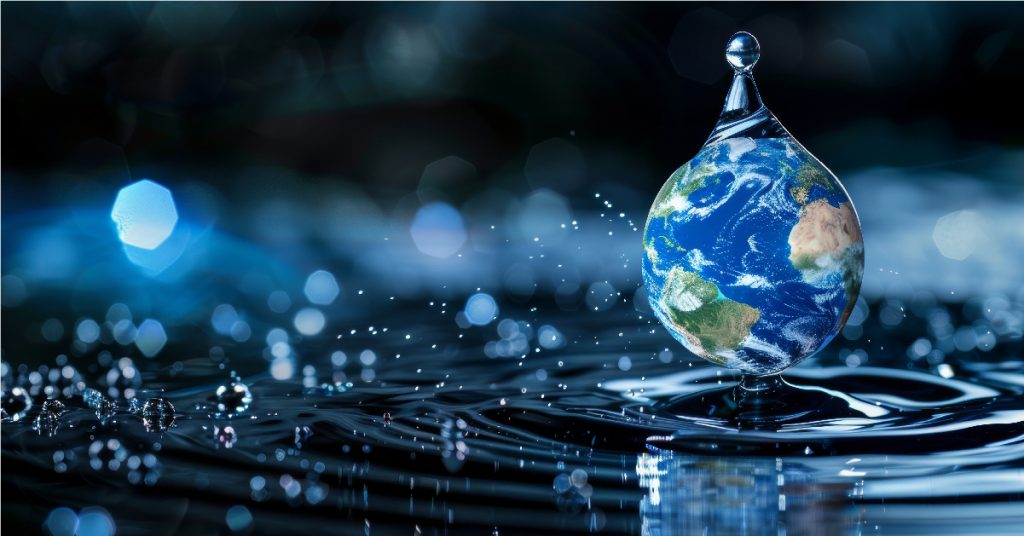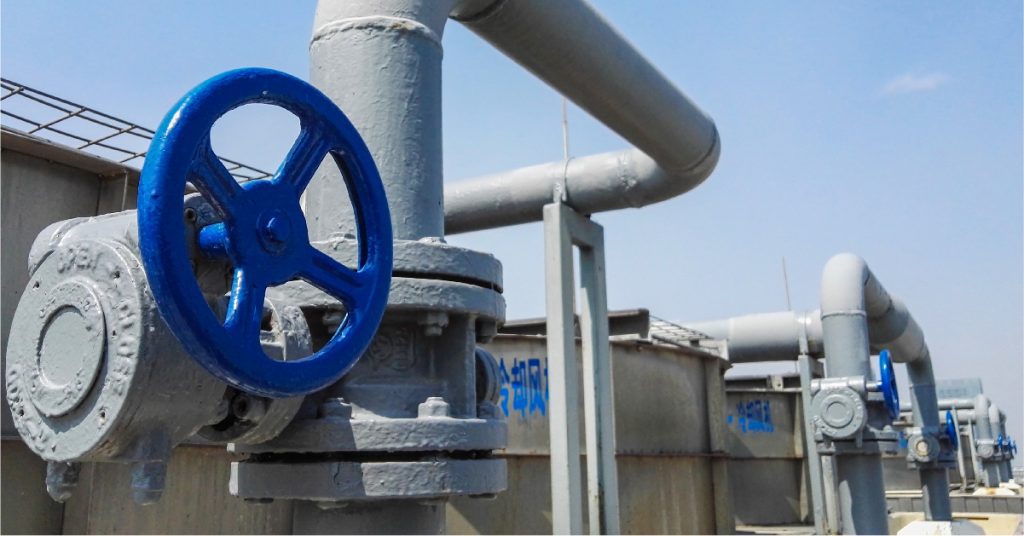Water conservation is becoming increasingly important as communities across the United States face growing water scarcity challenges. With the rising demand for freshwater, the need to find sustainable alternatives for water use has never been greater. One of the most promising solutions is greywater recycling. But what exactly is grey water, and how can it be recycled to benefit both households and the environment? In this blog, we will explore the concept of greywater, its potential uses, and the process of greywater recycling in the USA.
What is Grey Water?
Greywater refers to wastewater generated from household activities like bathing, washing clothes, and cleaning dishes. Unlike black water, which is sewage and contains human waste, grey water does not contain hazardous contaminants, making it a potential resource for recycling and reuse. Typically, grey water is considered less polluted than black water, but it may still contain soap, dirt, food particles, and other organic materials.
The water used in sinks, showers, washing machines, and bathtubs is all considered grey water. This is in contrast to “clean” water, which is typically used for drinking and cooking, and black water, which comes from toilets and contains more harmful pathogens. Since grey water is not contaminated with fecal matter, it has the potential to be safely recycled and used for various non-potable purposes such as irrigation, toilet flushing, and cleaning.
The Benefits of Grey Water Recycling
Greywater recycling is gaining popularity in many areas of the USA due to its numerous environmental and economic benefits. Here are some of the key advantages:
1. Conservation of Fresh Water
By reusing greywater, households can significantly reduce their reliance on freshwater, which is a valuable and limited resource. According to the Environmental Protection Agency (EPA), nearly 80% of household water use comes from activities that generate grey water. Recycling even a fraction of this water can lead to substantial savings in water consumption, making it an essential tool for water conservation, especially in drought-prone areas.
2. Reduction in Wastewater Disposal
Greywater recycling helps reduce the amount of wastewater that must be treated and disposed of. This can reduce the burden on municipal water treatment plants and minimize the environmental impact associated with wastewater treatment. By keeping grey water out of the sewage system, communities can ease the strain on infrastructure while promoting more sustainable water management practices.
3. Cost Savings
For households, greywater recycling can lead to reduced water bills, as recycled greywater is often used for non-potable purposes like irrigation and toilet flushing. In areas with high water costs or during periods of drought, greywater systems can provide long-term financial savings while contributing to water conservation efforts.
4. Supporting Sustainable Landscaping
Using grey water for irrigation can be particularly beneficial for landscaping, especially in arid regions of the USA. Grey water, when properly treated, can be used to water plants and gardens, reducing the need for potable water in landscaping. This is especially important in areas where water restrictions are in place, allowing homeowners and businesses to maintain green spaces without wasting fresh water.
How Does Grey Water Recycling Work?
Greywater recycling involves capturing wastewater from sources like sinks, showers, and washing machines, and treating it so that it can be reused for non-drinking purposes. The process can vary depending on the type of greywater recycling system installed, but the basic steps typically involve filtering and disinfecting the water before reuse.
1. Collection
The first step in greywater recycling is the collection of water from various household sources. This water is usually gathered from sinks, bathtubs, washing machines, and showers. Typically, water from toilets is not included in grey water systems, as it is considered black water and requires more intensive treatment.
2. Filtration and Treatment
Once collected, the grey water must be filtered to remove any large particles, debris, and soap residues. Basic filtration systems typically include screens or mesh filters that can capture solid matter. For more advanced systems, additional treatment processes may be used, such as:
- Sedimentation: Allowing larger particles to settle at the bottom of the tank.
- Chemical Treatment: Chemicals like chlorine are used to disinfect the water and kill any bacteria or pathogens.
- Biological Treatment: Utilizing microorganisms to break down organic matter in the water.
- Activated Carbon Filtration: To remove odors and chemicals.
3. Storage and Distribution
After filtration, treated grey water is typically stored in a separate tank. A properly designed greywater recycling system will ensure that the water is stored in a clean, sealed environment to prevent contamination. From there, the water is distributed to areas where it can be reused. For example, treated grey water can be used for irrigation systems, toilet flushing, or even for cleaning purposes in some cases.
Types of Grey Water Recycling Systems
There are several types of greywater recycling systems available, depending on the needs and goals of the user. These systems can range from simple, DIY solutions to more complex, professionally installed systems. Here are the most common types:
1. Simple Diverter Systems
These systems are the most basic and cost-effective type of greywater recycling. They divert water from bathtubs, sinks, or showers directly into the garden or yard for irrigation purposes. While these systems are simple to install, they typically do not include advanced filtration or treatment processes, so they are best suited for uses where water quality is not a major concern, such as irrigating drought-tolerant plants.
2. Gravity-Fed Systems
Gravity-fed systems collect grey water and distribute it to an irrigation system or storage tank. These systems often include basic filtration to remove debris but may not provide extensive treatment. They work well in areas with a slight slope, as the water flows naturally through the system without requiring a pump.
3. Pump-Activated Systems
Pump-activated systems are more advanced and provide greater control over greywater distribution. These systems typically include both filtration and disinfection stages, making the water safe for a wider range of uses. They are ideal for use in areas where water quality needs to be carefully controlled.
Pioneering Water Recycling Solutions: Ion Exchange’s Role in Sustainability
Ion Exchange offers comprehensive water management solutions focusing on wastewater recycling, product recovery, and waste minimization. Their integrated systems employ cutting-edge, energy-efficient, cost-effective technologies such as advanced membrane processes, oxidation, and evaporation. These innovations enable the conservation of water by recycling wastewater and recovering valuable products for reuse. They aim for zero liquid discharge and provide a strong return on investment while safeguarding the environment.
Ion Exchange selects the most suitable technologies and treatment schemes through meticulous bench-scale and pilot plant studies and detailed site surveys. These solutions are tailored for various industries, including power plants, fertilizers, electronics, electroplating, textiles, chemicals, food and beverages, pulp and paper, pharmaceuticals, and automobiles, ensuring optimal recovery and reuse of water and valuable products.
The INDION TADOX process represents a significant advancement in treating complex industrial and municipal wastewater. This innovative solution offers flexibility by allowing integration at the secondary treatment stage, either before membrane processes or during the pre-biological stage. Employing novel approaches, INDION TADOX minimizes chemical usage, reduces sludge production, prevents secondary pollution, and decreases the load on downstream tertiary treatments. As a retrofittable and integrated solution, it ensures reduced treatment times and delivers highly resource and energy-efficient processing, leading to 30-40% reductions in both CAPEX and OPEX. Key advantages include high efficiency, excellent treated water quality, a clean and green approach, and a modular, integrated design.
Advanced Oxidation Systems (AOPs) encompass a range of chemical treatment processes designed to remove organic and, at times, inorganic materials from water and wastewater through oxidation reactions with hydroxyl radicals (OH). These processes often utilize ozone (O3), hydrogen peroxide (H2O2), and UV light. A specific type of AOP is in situ chemical oxidation. The advantages of AOPs include their ability to effectively eliminate organic compounds in the aqueous phase rather than transferring pollutants to another phase. Additionally, some AOP designs can achieve disinfection, making them a comprehensive solution for various water quality issues. Since the complete reduction product of hydroxyl radicals is water (H2O), AOPs theoretically do not introduce new hazardous substances into the water.
HYDRAMEM, developed by Ion Exchange, showcases the best in modern membrane technology. With superior quality and decades of manufacturing expertise, HYDRAMEM is preferred for industrial, institutional, and domestic applications. Our advanced membrane range includes Reverse Osmosis (RO), Ultrafiltration (UF), and Nanofiltration (NF), ensuring high performance and reliability across various uses.
Conclusion
Greywater recycling is an essential component of sustainable water management in the USA, By understanding what greywater is and adopting greywater recycling systems, the nation can conserve freshwater resources, reduce environmental impact, and enhance water security. As the USA continues to lead by example in sustainability, integrating greywater recycling systems into urban development, industry, and public infrastructure can significantly address water scarcity challenges.





